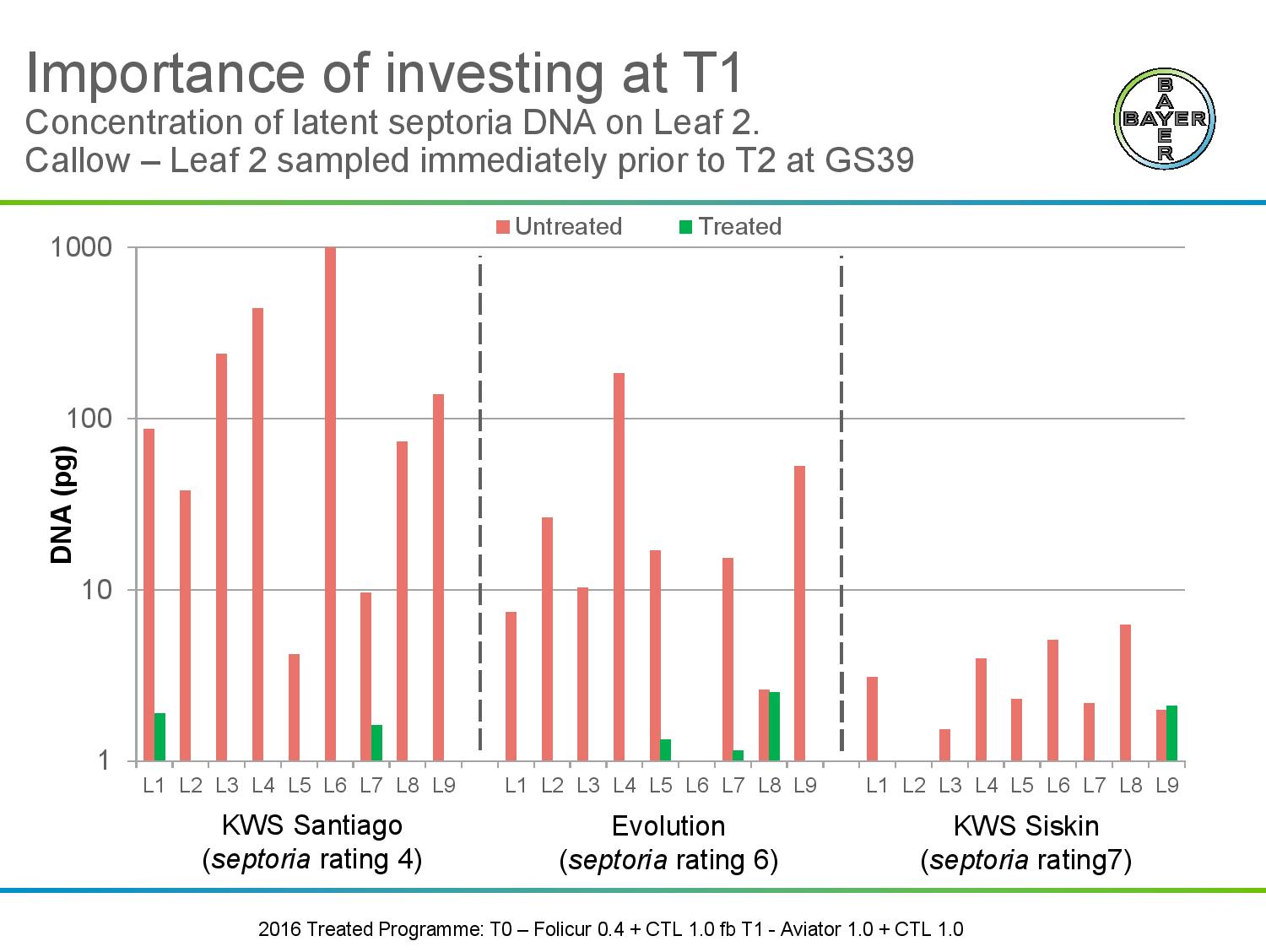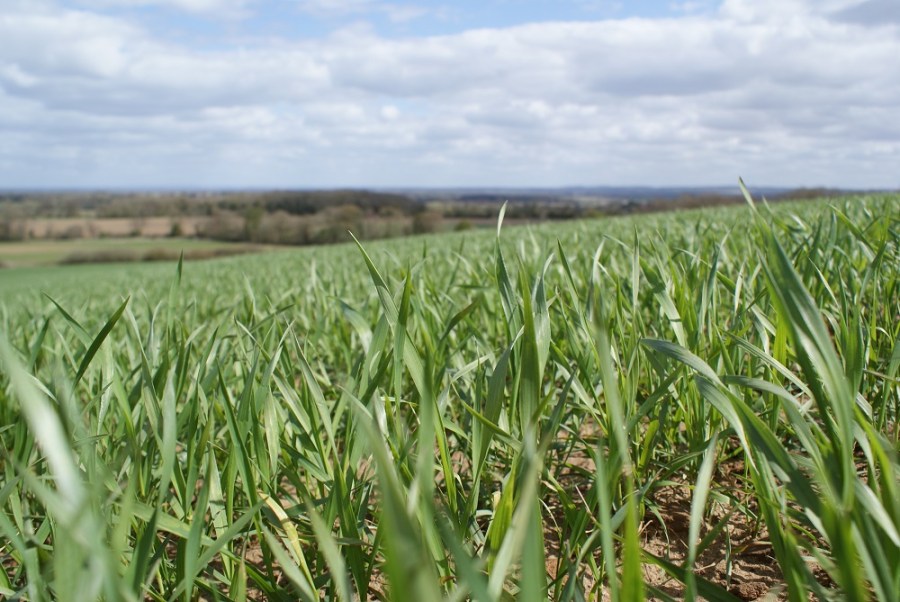Two SDHIs in the programme is still likely to be the best strategy on the majority of crops this season, that was the consensus of opinion at a roundtable meeting hosted by Bayer last month. CPM reports.
Most of the actions you take as part of an anti-resistance strategy are completely in conflict with efficacy.
By Lucy de la Pasture
With high levels of septoria and smatterings of yellow rust being reported, fungicide programmes will be swinging into action in the next few weeks. It raises the question how many triazoles should be applied in the fungicide programme as people gear up for T0s or even pre-T0s.
Fungicide resistance has been under the spotlight, particularly since the discovery of reduced SDHI sensitivity in septoria, but when it comes to reconciling resistance management strategies with the most productive fungicide programme for the crop, compromises have to be made, believes NIAB technical director Bill Clark.

Bill Clark’s biggest concern is that azole rates may be too low or left out of the fungicide programme altogether.
“Most of the actions you take as part of an anti-resistance strategy are completely in conflict with efficacy. Growers and advisors will rightly have yield and quality at the forefront of their decision making. Some of the things that clearly reduce resistance risk aren’t applicable on farm. Using low rates means there’s less selection for resistance, but as soon as you reduce the dose then you increase risk of disease.
And it’s risk that’s the root of the problem, with a fungicide armoury that’s best used as a protectant and an unpredictable climate, fighting a rear-guard action is not a desirable situation to get into. “Leaving out a T0 or applying just azole plus CTL at T1 may be desirable from an anti-resistance point of view, but what if it goes wrong?” he asks. “Under high septoria pressure such a spray would not be good enough.”
T0 is generally regarded as a useful insurance, taking some pressure off the T1 timing. It’s an opportunity to use a different azole early in the programme, points out Indigro agronomist Maddy Vaughan.
That may be true but Bill reminds that an application of tebuconazole will select for the I381V mutation and would be the worst triazole to use at an early timing in a septoria situation. But it works on yellow rust and tends to be applied at a low dose, he adds.
A T0 needs to be at the T0 timing, reckons Bayer’s Jennie Watson. “You can’t afford to shift the whole programme because you’ve sprayed early. Any spray before T0 should be viewed as an additional spray.”
Maddy agrees that making sure the right leaf is targeted is absolutely critical to the success of any fungicide programme.
Many farmers and advisers still struggle to identify T1 correctly, says Bill. “With shifts in the sensitivity of the septoria population, getting the timing right is even more important. If you go too early at T1 because the crop is half way up your wellies, then leaf 3 won’t be there to be protected and it’s a wasted spray.

Making use of varietal resistance is one of the best ways growers can take the pressure off fungicides where septoria is concerned..
“There’s no quick and easy way to determine when the final leaf 3 is emerging – you have to dissect plants and check both nodal growth stage and leaf emergence,” he advises.
He believes there’s some confusion about systemicity and this may have led to some complacency when it comes to accurately pin-pointing spray timings. He points out that a systemic fungicide won’t move into new growth that’s not present at the time of spraying.
Maddy believes that in a low-pressure season, azole plus CTL may still have a place at the T1 timing but says it depends very much on the variety and the grower’s ability to get round crops and hit the timing spot on.
“If we were really good at weather forecasting then it would be easy, but the last thing you want is to end up in a curative situation at T1. I’d only consider leaving out the SDHI if I knew the spray would go on at leaf 3 emerging and then only on some varieties,” she says.
“In a high disease pressure year, and last year there were high levels of septoria in some regions, if you’ve only applied azole plus CTL at T1, then you’re going to be in a highly eradicant disease situation at T2. You’ll need a high dose SDHI and that will increase selection pressure and the efficacy will drop away.”
Jennie agrees and says that at their septoria prone Callow site, a well-timed application of Proline (prothioconazole) plus CTL is still giving effective control. But in the reality of commercial farming, azole plus SDHI is often the safer option. “Our view is that if you have a variety with an RL rating of less than 7, drilled prior to Nov and winter temperatures haven’t been below average, then the risk is too great. Our recommendation would be 1.0 l/ha Aviator (bixafen+ prothioconazole) plus CTL. It isn’t a big outlay for the peace of mind.”
The huge number of members’ trials conducted by NIAB also give an insight into the problem of managing risk and on average, a high input fungicide programme comes out overwhelmingly better than a low input one, explains Bill.
“We looked at 1.5l/ha Adexar (fluxapyroxad+ epoxiconazole) plus CTL at T2 only as the least intensive treatment, a full programme with one application of SDHI at T2, and a further programme with SDHI at T1 and T2,” he says.
“We found that in a kind year, there was a saving of around £30/ha on fungicide cost but in a higher disease year the lower input programme would lose £90. It’s a tricky decision, but if you’re growing a more septoria-resistant variety it may be possible to apply just one SDHI. But if you’re not sure how responsive a variety is to fungicides, then it has to be two SDHIs. On average you will be better off, even if it’s not the optimal treatment every season.”
For the high-risk varieties, such as Gallant, Cordiale, Barrel, Leeds, Viscount, KWS Silverstone, KWS Santiago, Dickens, I would use two SDHIs. For those at a moderate risk I would still use two SDHIs, but with a lower dose of SDHI at T1.
One of the factors affecting septoria risk is time of drilling, adds Jenny. “The AHDB Recommended List is based on wheat drilled in Oct, so for Sept drillings you have to knock a point off the RL disease ratings when assessing risk.”
The easy way to manage resistance is to use mixtures and the industry is doing this well, says Bill. But there’s also dangerous talk where the loss in efficacy of the azoles is being misunderstood and growers think they’re not adding anything useful to the mix. His biggest concern is that azole doses aren’t always high enough and in some cases, it’s being left out altogether.
“Triazoles are still working even if they may look like they’re not – you can’t actually see 30-50% control in a curative situation in a high disease year. But they’re still adding useful levels of disease control and yield responses in our trials and also help protect the SDHI, but only if they’re being used at a high enough dose.
“The trouble is people are cutting the rates too much when using them with straight SDHI. Some people are even talking about dropping the azole altogether and using straight SDHI with CTL. This is lunacy because the CTL is doing little to protect the SDHI. Three-way mixes are the best and easiest way to practically manage resistance,” he comments.
Maddy chips in that when using co-forms that only deliver 50% of azole dose, they must be topped up with additional azole to be robust enough.
So what about SDHI rates? There aren’t many situations where Bill would use full rate of SDHI even in a high-pressure year and there isn’t a variety where the benefits they bring are greater than their cost, he says.
“Many people are using a 75% dose in a three-way mix. We’re not in Ireland and our evolution of septoria resistance isn’t necessarily following theirs. At the NIAB Sutton Scotney site, we have some of the most highly resistant septoria with all sorts of mechanisms of resistance, including overexpression and efflux pump activity, yet we’re still seeing good efficacy from SDHI plus azole plus CTL application under very high disease pressure.”
Jennie adds that in a highly curative situation a full dose of SDHI would be of benefit. If the T1 spray was delayed then the programme will be highly reliant on T2 so again warrants a high dose of SDHI.
The only situation where Bill would drop CTL from the mix is when disease has got away and a highly curative application is necessary. “If the flag leaf spray is 4-5 days late, then maximum eradicant activity will be needed. CTL in the mix would make this situation much worse, potentially reducing the eradicant activity of partner azoles and SDHIs.
“Leaf 2 will have been out for 10 days by T2, if you’re then late with the flag leaf spray it’s unprotected for 14 days and that’s too long. Full dose SDHI will give 10-14 days curative activity, so at the doses normally applied, 10 days would be the max,” he adds.
Response to SDHI fungicides is more than just disease control
The responsiveness of varieties to fungicides is another area where NIAB-TAG has done a lot of work for their members and it’s not something that can’t be entirely explained by disease control alone. Last year the average yield response to fungicides was 3.7t/ha, with the highest response being 9.2t/ha in Reflection, says Bill.
“Most variety yield responses don’t correlate well with their RL disease ratings, apart from the varieties with extreme susceptibility to septoria and yellow rust. It’s very difficult to predict yield responses using RL ratings alone, something else is going on.”
So what are these other factors? Jennie says this is an area where Bayer have done a lot of work with ADAS and found more tiller survival at T2, plants were able to use water more effectively, were better rooting and had an enhanced ability to cope with environmental stresses, in addition to the greening often associated with SDHI application.
“For every day the crop stays green, you get an extra 0.2t/ha,” says Bill. “So if it stays green for an extra five days, that’s an extra tonne. The physiological effects are similar to the strobes but it isn’t the same ethylene inhibition mechanism, it’s something else. There’s clearly an additional benefit from SDHI application beyond just disease control.”
Jennie agrees, saying these physiological effects appear to be accumulative. This was seen in nine ADAS trials carried out over four years across the country, where 1.2 l/ha Ascra (bixafen+ fluopyram+ prothioconazole) applied at T2 gave a yield increase of 0.52t/ha over the untreated in low disease pressure situations.
Bill points out that on a very hot day, when stomata close and the flag leaf rolls, a plant may lose 0.1t/ha in potential yield by not photosynthesising for half a day. If an SDHI helps the crop withstand heat stress during a hot period then there’s an obvious benefit.




